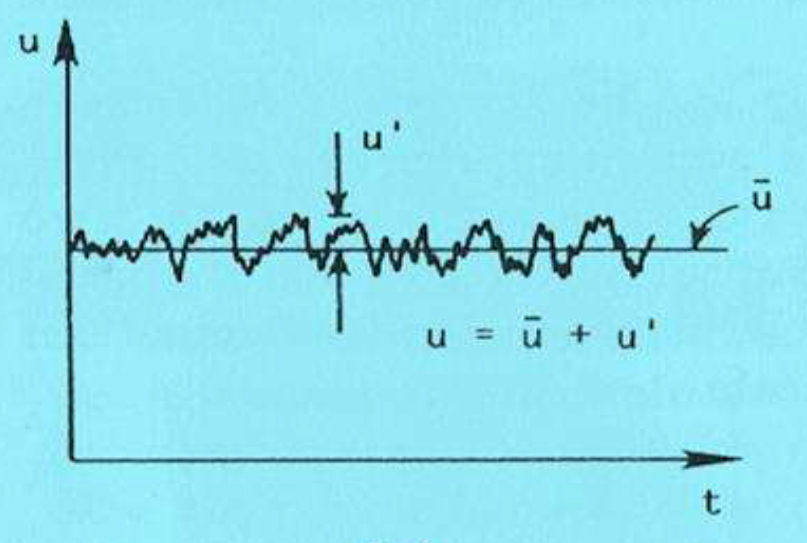Introduction to Turbulence

Introduction to turbulence and its characteristics.
-
Step 1:
Turbulence
Turbulence is one of the most important phenomena in fluid dynamics that occurs at high Reynolds numbers as a result of the instability of fluid flow. The instability of flow is due to the nature of governing equations which is the Navier-Stokes equation. Since those equations are non-linear, inertial terms and viscous terms interact with each other. As a result, the flow pattern becomes unpredictable and chaotic for turbulent regime. Therefore we use statistical methods, instead of deterministic, to predict fluid flow characteristic.

As the Reynolds number increases vortices occur in the fluid flow and the flow becomes more complex.
While the fluid elements follow a regular pattern in the laminar regime, it is not as same as the Reynolds number increases. For turbulent flow, fluid elements do not follow a regular and smooth pattern, instead, various quantities show a random variation with time and space. This chaotic motion of fluid elements causes the flow to mix together. As a consequence of this property heat and momentum transfer increases in turbulent flows.

This random fluctuation of properties, which is the velocity in the above picture, makes the flow unpredictable and chaotic. The chaotic behavior of flow indicates that the results are intensely dependent on initial conditions. Here we listed some of the characteristics of turbulent flow:
Typical Characteristics of Turbulent Flows
- Enhance diffusion : Since the flow mixes up, it enhances mass, momentum, and heat transfer. This is the most important feature of turbulence from the engineering point of view.
- Stability criteria : Instabilities of turbulence result from non-linear inertial terms and viscous terms of Navier-Stokes equations. This interaction is a very complex phenomenon because it is 3 dimensional and time-dependent.
- Time dependency : Turbulence by its nature is a time-dependent phenomenon. But as an engineer we use time-averaged values.
- Eddies and Spectral Length : A turbulence eddy can be thought of as a local swirling motion whose characteristic dimension is the local turbulence scale. Those eddies are always dissipative.
- Non-Linearity effects
- Separation and Drag Reduction : Since the velocity gradient near a wall for turbulent flow is higher than laminar flow, shear stress is always greater for the turbulent regime. But the turbulent flow has a very important property. Since the flow near the wall has higher energy, it doesn’t leave the surface as the laminar flow does. This means that if the flow is turbulent it is less likely to separate from the surface of a body and it causes less form drag.
Thank you for reading.

